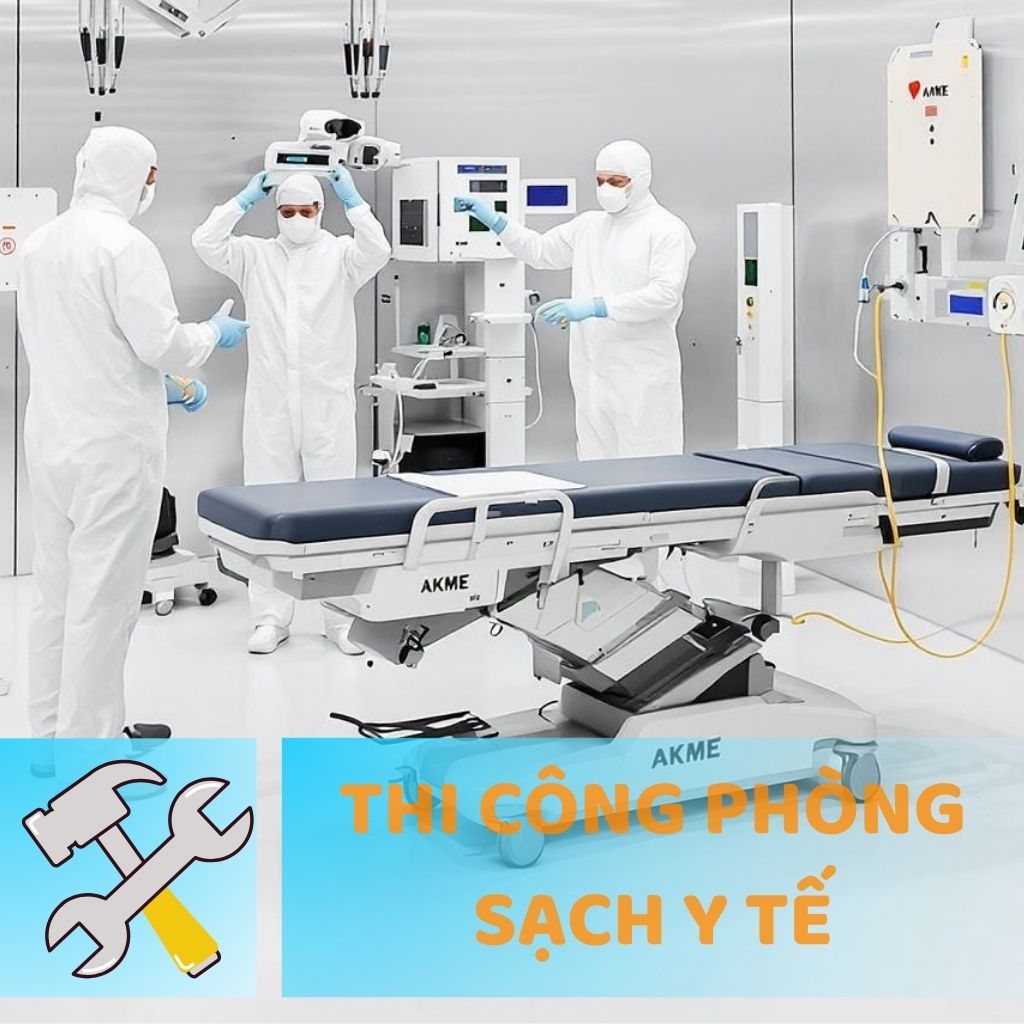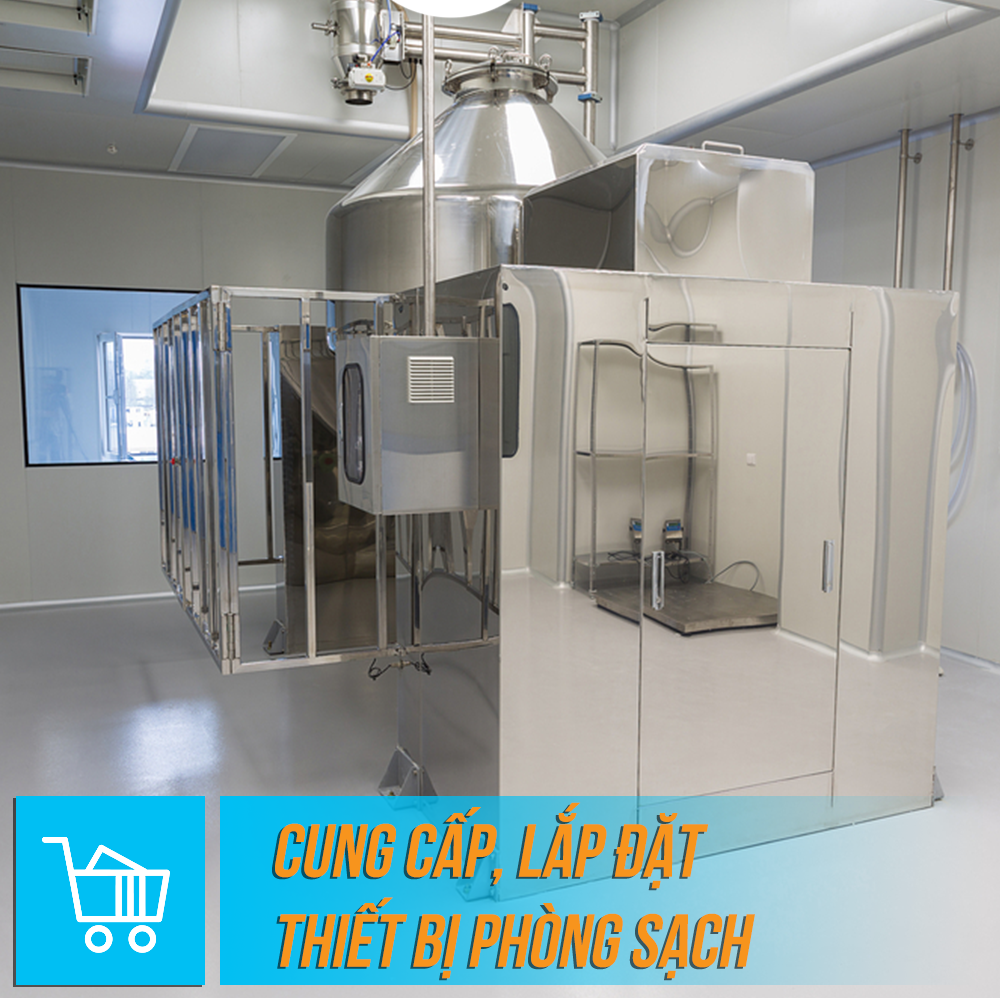Factors affecting the recovery of microorganisms from surfaces using contact plates in cleanrooms.
13:53 - 04/09/2025 311
Investigate factors affecting the efficiency of microbial recovery from cleanroom surfaces: roughness, material type, contact time and compare with the swab method.
Types of cleanroom walls: Comparison and how to choose the right one
Why is steel piping essential in electronic component manufacturing plants?
Positive Pressure or Negative Pressure? A Standard Guide to Cleanroom Design
Mistakes to Avoid When Designing Cleanroom Electrical and Lighting Systems
☰ Table of Contents
- 1. The Importance of the Contact Plate Method in Microbial Monitoring
- 2. Surface Materials and Microbial Recovery Efficiency
- 3. Contact Time and Pressure on the Contact Plate
- 4. Microbial Recovery by Material Type and Practical Applications
- 5. Comparison Between Contact Plate and Other Methods
- 6. Conclusion & Recommendations
The Importance of the Contact Plate Method in Microbial Monitoring
The contact plate method is the standard used to check microbial contamination on surfaces in cleanrooms, especially when producing sterile products according to Annex 1 – EU GMP. This device is useful for monitoring equipment, protective clothing, and surfaces close to the product.
Surface Materials and Microbial Recovery Efficiency
A study from AstraZeneca Group indicated that surface roughness is an important factor affecting microbial recovery performance:
- Copolyester protective glasses (roughness ~0.153 µm) and stainless steel (about 0.496 µm) have high recovery efficiency (~80%).
- Polyester cleanroom clothing (roughness ~10.973 µm) is less effective, due to its rough surface retaining microorganisms.
The smoother the surface, the harder it is for microbial particles to hide and the easier they are recovered into the agar environment.
Contact Time and Pressure on the Contact Plate
Another study on stainless steel and vinyl surfaces showed:
- When the contact plate is pressed for 20 seconds with even pressure, the recovery efficiency is better than for 10 seconds.
- Extending contact time to 30 seconds does not significantly improve recovery results.
Microbial Recovery by Material Type and Practical Applications
In practical tests with 5 common materials in cleanrooms (polyester clothing, latex gloves, EPDM gloves, copolyester glasses, and steel trays), the microbial recovery rates vary:
- Polyester, latex, EPDM have about 70% efficiency.
- Copolyester glasses and steel trays reach ~80%.
This reflects the reality that microorganisms vary in size and nature, affecting their adhesion and distribution on different materials.
![[translate:Factors affecting microbial recovery from surfaces using contact plates in cleanrooms]](/uploads/tiny_uploads/C%C3%A2n%20nh%E1%BA%AFc%20v%E1%BB%81%20hi%E1%BB%87u%20qu%E1%BA%A3%20thu%20h%E1%BB%93i%20vi%20sinh%20b%E1%BB%81%20m%E1%BA%B7t%20b%E1%BA%B1ng%20contact%20plate%20trong%20ph%C3%B2ng%20s%E1%BA%A1ch-600x400_1.jpg)
Comparison Between Contact Plate and Other Methods
- Contact plates usually yield better microbial recovery results compared to swabs when testing flat, smooth surfaces.
- For uneven surfaces or complex structures, swabs are a more suitable choice.
Conclusion by Anh Khang
| Factor | Impact on Microbial Recovery Efficiency |
|---|---|
| Smooth surfaces (steel, glass) | High efficiency (~80%) |
| Rough surfaces (polyester) | Lower efficiency (~70%) |
| Contact time | 20 seconds is optimal |
| Contact plate vs Swab | Contact plate superior on flat surfaces |
Recommendations:
- Understand surface characteristics to choose the appropriate sampling method.
- Standardize contact time and pressure to ensure consistency.
- Combine contact plates with swabs when testing complex surfaces to optimize results.
Meta description (SEO): Learn the factors affecting microbial recovery efficiency from cleanroom surfaces: roughness, material type, contact time, and comparison with swab method.
 | ANH KHANG CLEANROOM ELECTROMECHANICAL JOINT STOCK COMPANY Hotline: 1900 636 814 - 0902 051 222 Email: info@akme.com.vn Website: akme.com.vn Address: Lot B7 - Xuan Phuong Garden - Phuong Canh - Nam Tu Liem - Hanoi. |
12:05 - 28/11/2019 47501
Cleanroom Design and Construction
14:05 - 11/03/2025 20046
GMP and ISO Standard Cleanroom Construction
14:18 - 11/03/2025 12026
ISO Standard Medical Cleanroom Construction
14:13 - 28/02/2025 22997
Electronics Cleanroom Construction
16:15 - 18/03/2021 4558
Warranty Service
16:26 - 28/11/2019 17603
Supply and installation of cleanroom equipment
14:50 - 26/11/2019 5953
Technology Production Line Consulting
16:35 - 19/03/2025 18193














